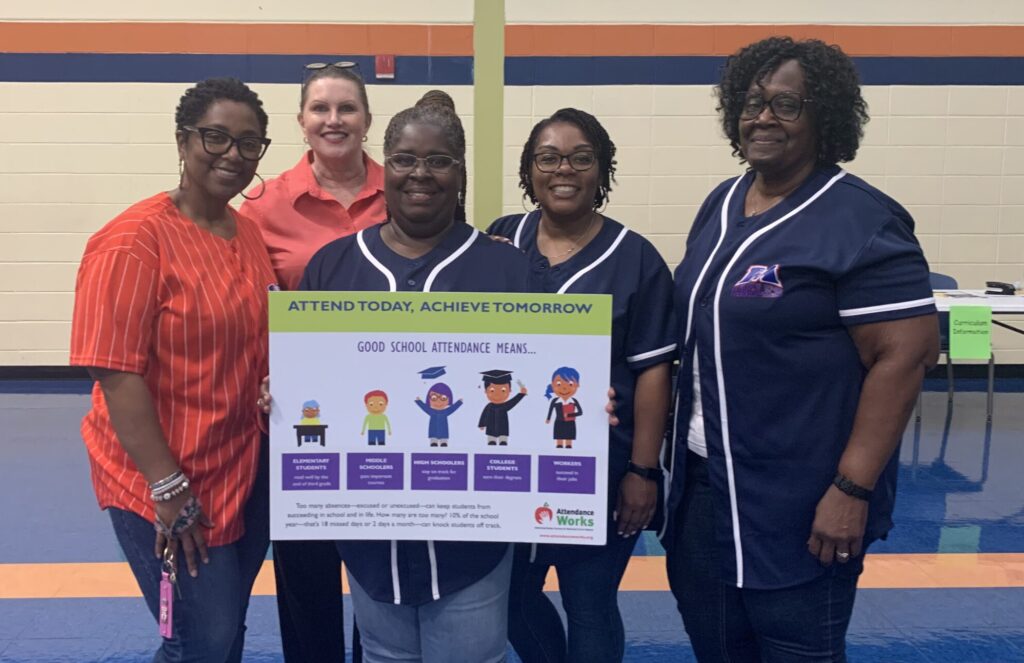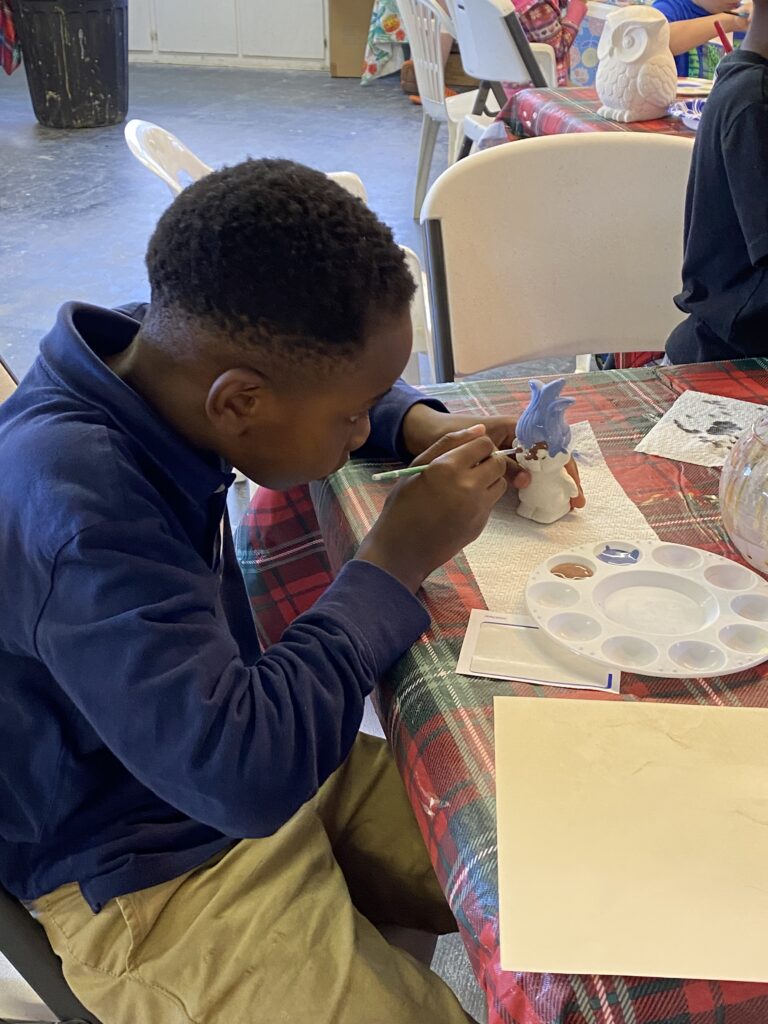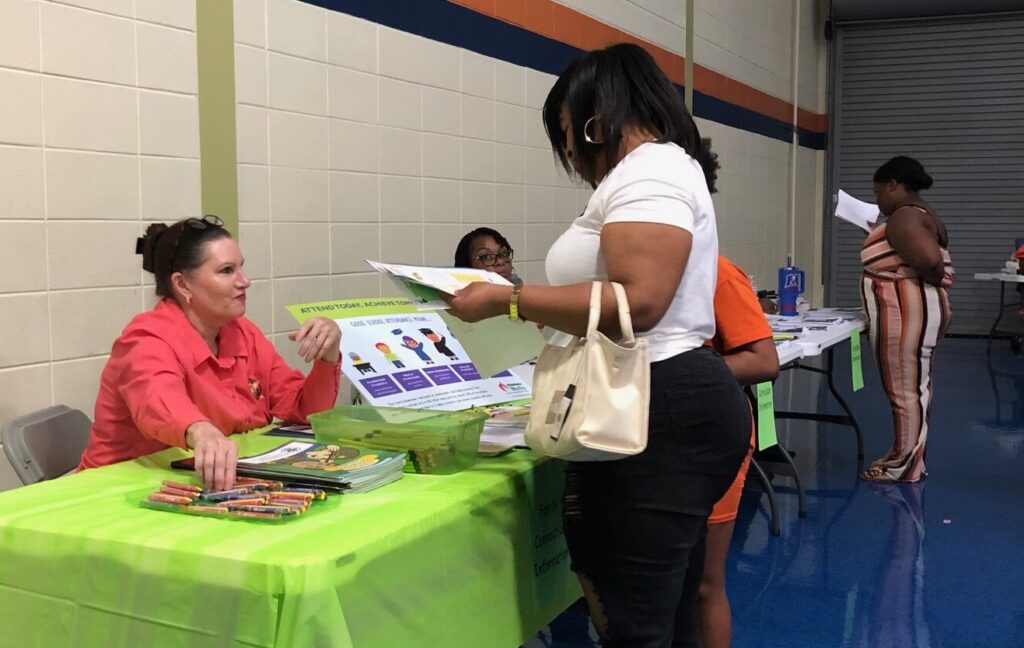Mitchell County Children and Youth Works to Get Students Back into the Classroom—and Keep Families Engaged
Print This Post
By Diana St. Lifer
Student attendance never used to be a problem in Mitchell County. The county’s attendance rate from 2013 through 2020 was among the best in Georgia with the number of children absent more than 15 days significantly lower than the state. That changed after the pandemic, when the rate jumped from just 2.9% in 2021 to 39.3% in 2022—much higher than Georgia’s rate of 24.4%.
This echoed a national trend. According to the Annie E. Casey Foundation, 30% of all students were chronically absent during the 2021-22 school year, compared to 16% in 2018-19—the final school year fully unaffected by COVID.
Mitchell County Children and Youth Executive Director Jessica Jennings said the Georgia Family Connection Collaborative is focused on improving school attendance as well as access to mental and behavioral supports and services for children and families.
Mitchell is one of 10 counties in Georgia Family Connection Partnership’s (GaFCP) Community Partnership for Supporting Youth cohort, formed in 2021 to focus on reducing the number of students disconnected from school and employment opportunities.
Improving Attendance One Seat at a Time
“We had severe cases of parents going to jail for not sending their children to school,” Jennings said. “Things have improved in that area, and we’re working to get the message out to parents about the importance of school attendance.”
The county’s success in this area can be traced back 20 years when an Attendance Support Team was created to address truancy. “We developed protocol sanctioned by the district attorney and supported by our state court,” said Jennings. Today, all schools in Mitchell County participate in an Attendance Task Force.

A school staff member works with families of students who have excessive absences to identify causes and implement strategies. If absenteeism persists, the Attendance Support Team is notified. This team includes Family Connection, Mitchell County Health Department, local law enforcement, Division of Family and Children Services, Department of Juvenile Justice, mental health professionals, and school staff. The team reviewed 49 cases last year—nearly three times the amount prior to COVID.
According to Jennings, court-related punitive measures for chronic truancy used to serve as a deterrent for families. “We’re a small community, so word gets out quickly when parents have to sit in jail for a weekend,” she said. “If parents got a note that their child was flagged for attendance and they knew someone who’d gone to court or even jail, they would want to prevent it happening to them.”
Jennings said students experienced significant anxiety about returning to school after the pandemic, so only the most severe truancy cases were referred to court. “Our attendance has really suffered,” Jennings said. “Families were hit hard with job loss and financial hardship, so we decided to focus our efforts on prevention and education.”
The Collaborative has aimed to eliminate specific barriers found in families referred to the Attendance Task Force by connecting families to school bus transportation, purchasing school uniforms for children missing school due to lack of uniforms, and paying for the extermination of a home infested with bed bugs that kept children from attending school.
The Collaborative uses Attendance Works resources to expose families to the ramifications of chronic absence such as difficulty learning to read by third grade, achieving academic goals in middle school, and graduating from high school.
In 2022, GaFCP dispersed funding secured by Congressman Sanford D. Bishop, Jr. and allocated from the U.S. Department of Education to help address learning loss during the pandemic by focusing on early literacy in Georgia’s Second Congressional District’s 30 counties.
Mitchell’s efforts focused on art literacy, and the Collaborative worked with their local Head Start to target low-income families. “We discussed how art plays an instrumental role in learning during two parent-child pottery painting classes held at a local art studio,” said Jennings. “We also talked about listening to instructions, following steps, and creativity.”
The classes were such a success that a local resident’s donation to the art studio is helping low-income families participate in future art classes. Jennings said this also opened an opportunity for the Collaborative to use some investments to allow Head Start students to visit the art studio throughout the school year.
Addressing Mental Health to Meet All Students’ Needs
Jennings said getting students back into the classroom and engaging families in their educational journey are not the only components of the solution.
“All our discussions kept coming back to mental health and how much students and staff are struggling, so we added a mental health strategy including a dedicated team,” she said. “We’re working to improve knowledge of, and access to, mental health resources.”
The Collaborative is hosting lunch-and-learn educational workshops, suicide prevention training, and mental health resource fairs. The goal is to spread the word about all available resources and how to access them to everyone in the community.
Jennings said the reach is wide, as she’s seeing children of all ages struggling. According to the Mitchell County Child Fatality Review Committee, there has been a youth death by suicide each year for the past four years.
“Our Head Start director has reported more behavioral issues in young children, and the emergency room at our local hospital says rarely a day goes by without someone being seen for a mental health emergency,” Jennings said.

Services for students include APEX, a school-based program that works with children in the Pelham City and Mitchell County schools with mental or behavior health disorders, and Local Interagency Planning Team (LIPT), a committee that works to support youth up to age 18 with mental and behavioral health diagnoses and their families.
The Collaborative recently received a $20,000 grant from the Mitchell Electric Membership Corporation (EMC) that will go toward implementing its mental health strategy.
Debra Cox, Mitchell County Farm Bureau Women’s Committee chair and the Collaborative’s mental health strategy team member, said getting children involved in the arts and outdoor activities fosters social connection and can help reduce stress.
“Families don’t spend as much time together,” said Cox, who has worked with children through the county’s 4-H program. “That’s part of the problem with our young people and their mental health. Children aren’t spending enough time outside or diving into the arts due to all the digital distractions. We’re working to ensure that our young people are less stressed and their mental health is better because if you have good mental health, you have good physical health as well.”
Partnering with Parents to Achieve Positive Outcomes
Groups like Parent Power Hour and Parent University offer workshops based on interests and what’s happening in the school and community. Topics range from understanding school systems and policies to financial literacy, understanding new math, and learning loss.
“I’m the liaison between parents and school for the betterment of the students,” said Cindy Smith, Parent Involvement Coordinator for Pelham City School District for the past 14 years. “I build capacity for parents and staff for parent engagement, which includes providing parent with enrichment, empowerment, and resources to help students be successful.”

Mitchell County’s schools are all Title 1 and receive federal funding, and Smith makes sure they meet requirements for federal programs. She also has served as the district’s homeless liaison for nine years—providing resources, removing barriers, and aiding in education efforts so that population can be successful in school.
“Our greatest challenge is helping parents understand how vital their role is,” said Smith. “Studies show that the partnership among parent, school, and student contributes most to student success. This happens when parents feel welcome and validated in the school building—and when teachers and staff are on board to cultivate this atmosphere for families in their buildings. Collaboration is always what works best.”
Contact:
Krystin Dean
GaFCP Communications Specialist
706-897-4711
krystin@gafcp.org
Follow us on Twitter: @gafcpnews
Connect with us on Facebook.
